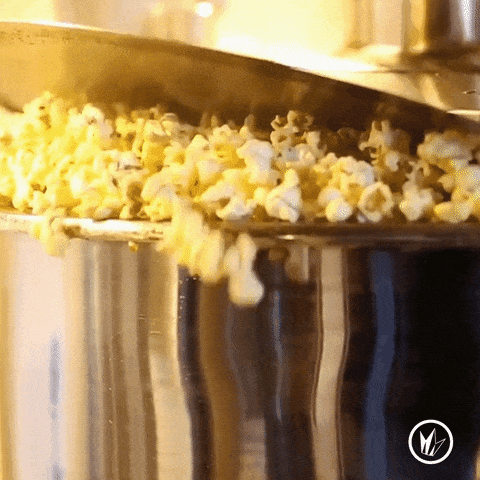Pop Pat's Popcorn with "P"

Rationale:
This lesson will help children identify /p/, the phoneme represented by P. Students will learn to recognize /p/ in spoken words by learning a sound analogy (popping popcorn) and the letter symbol P, practice finding /p/ in words, and apply phoneme awareness with /p/ in phonetic cue reading by distinguishing rhyming words from beginning letters.
Materials:
1. Primary paper and pencil
2. Sentence strip stating, “Pat’s popping popcorn pleases perfectly”
3. Drawing paper and crayons
4. Laura Numeroff’s "If You Give a Pig a Pancake," (Harper Collins, 1988)
5. Word cards with pail, par, neat, pick, job, and pun
6. Assessment worksheet identifying pictures with /p/ (URL below)
Procedures:
1. Say: "Our written language is a secret code. The tricky part is learning what letters stand for – the mouth moves we make as we say words. Today we are going to work on spotting the mouth move /p/. We spell /p/ with letter P. Popcorn pops with the sound /p/."
2. Say: "Let’s make the sound of popping popcorn, /p/, /p/, /p/." (Pop fingers open). "Notice how the sound is coming out; we say /p/ by opening our mouth and sending a puff of air out. We do not use our tongue to say /p/."
3. Say: "Let me show you how to find /p/ in the word open. I’m going to stretch open out in super slow motion and listen for the popping popcorn. Ooo-p-ee-nn." Slower: "Ooooo-p-eeee-nnnn – there it was! I felt my mouth open and send out a puff of air. Popping popcorn /p/ is in open."
4. Say: "Let’s try a tongue tickler!" (on sentence strip.) "Pat is hungry and wants her favorite snack, popcorn. She gets a bag and puts it in the microwave. She listens for the pop sound, pop, pop, pop. She is so happy and ready to enjoy it! Here’s our tickler: Pat’s popping popcorn pleases perfectly. Everybody say it 3 times together." Let students say the tickler. "Now say it again, and this time, stretch the /p/ out at the beginning of the words. Ppppat’s ppppopping pppopcorn pppleases ppperfectly." Let students say the tickler while stretching out /p/. "Try it again, and this time break it off of the word: /p/at’s /p/opping /p/opcorn /p/leases /p/erfectly.” Let students do so.
5. Have the students take out a sheet of primary paper and a pencil. Say: "We use letter P to spell /p/. Let’s write the lowercase letter p. Start at the top of the fence and draw a line all the way down to the ditch. Trace that line back up to the sidewalk then start to draw a circle facing right all the way up to the fence then connect the circle back to the line on the sidewalk. I want to see everybody’s p. After I put a smile on it, I want you to make 9 more just like it."
6. Call on students to answer and tell how they knew: "Do you hear /p/ in jail or pen? Princess or king? Close or open? Slap or clam? Pain or game?" Say: "Let’s see if you can spot the mouth move /p/ in some words. Make your fingers pop open if you hear /p/: Carla, puts, her, pink, pencil, beside, the, pretty, yellow, pen."
7. Say: "Let’s look at a book by Laura Numeroff called 'If You Give a Pig a Pancake.' Laura Numeroff tells us about how if you give a pig a pancake, she will want some syrup to put on it. If the pig gets syrup for her pancake, she will get all sticky and need a bath! What could happen next?" Read the first page, drawing out /p/. “If you give a ppppig a pppancake.” Ask the students if they can think of other words with /p/. Ask students to create a silly name for the pig that starts with P, like "Pppprollie" or "Ppppring-pppprill-ppppriss." Then have each student write their silly name with invented spelling and draw a picture of their silly pig. Display their work.
8. Show PAIL card and model how to decide if it is pail or sail. Say: "The P tells me that it is popping
popcorn, /p/, so this word is pppp-ail, pail. You try some: PAR: par or far? NEAT: feat or neat? PICK: pick or lick? JOB: sob or job? PUN: pun or fun?"
Assessment Worksheet:
https://www.superteacherworksheets.com/phonics-beginningsounds/letter-p_WFMWZ.pdf?up=1466611200
Assessment:
Distribute the worksheet. Students trace uppercase and lowercase P, then color the pictures that begin with P. Call on students individually to read the phonetic cue words from step 8.
Reference:
"Emergent Literacy Design: Sizzle Some Sausages with S," Samantha Eason.
https://samanthaeason1999.wixsite.com/mysite/emergent-literacy-design
